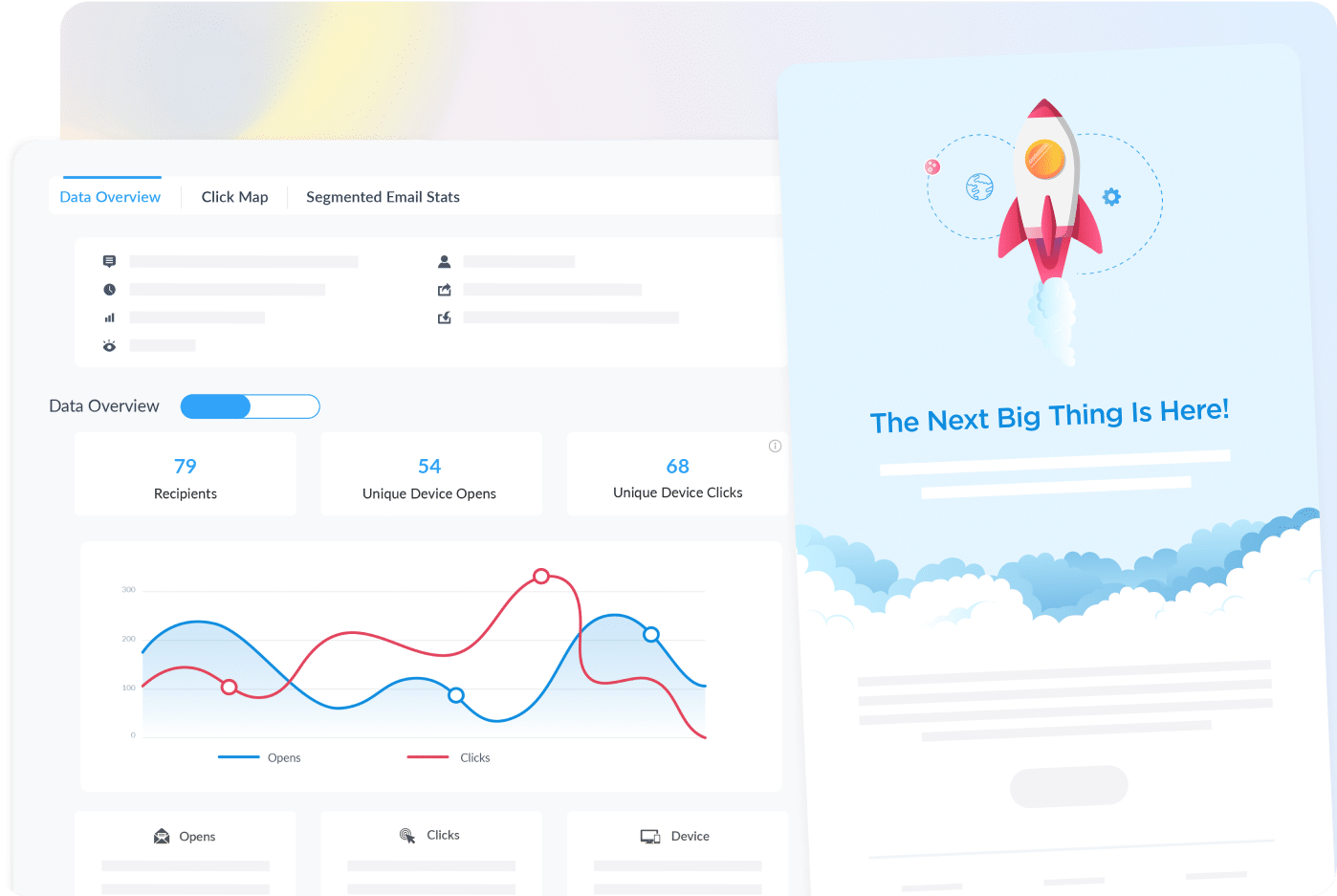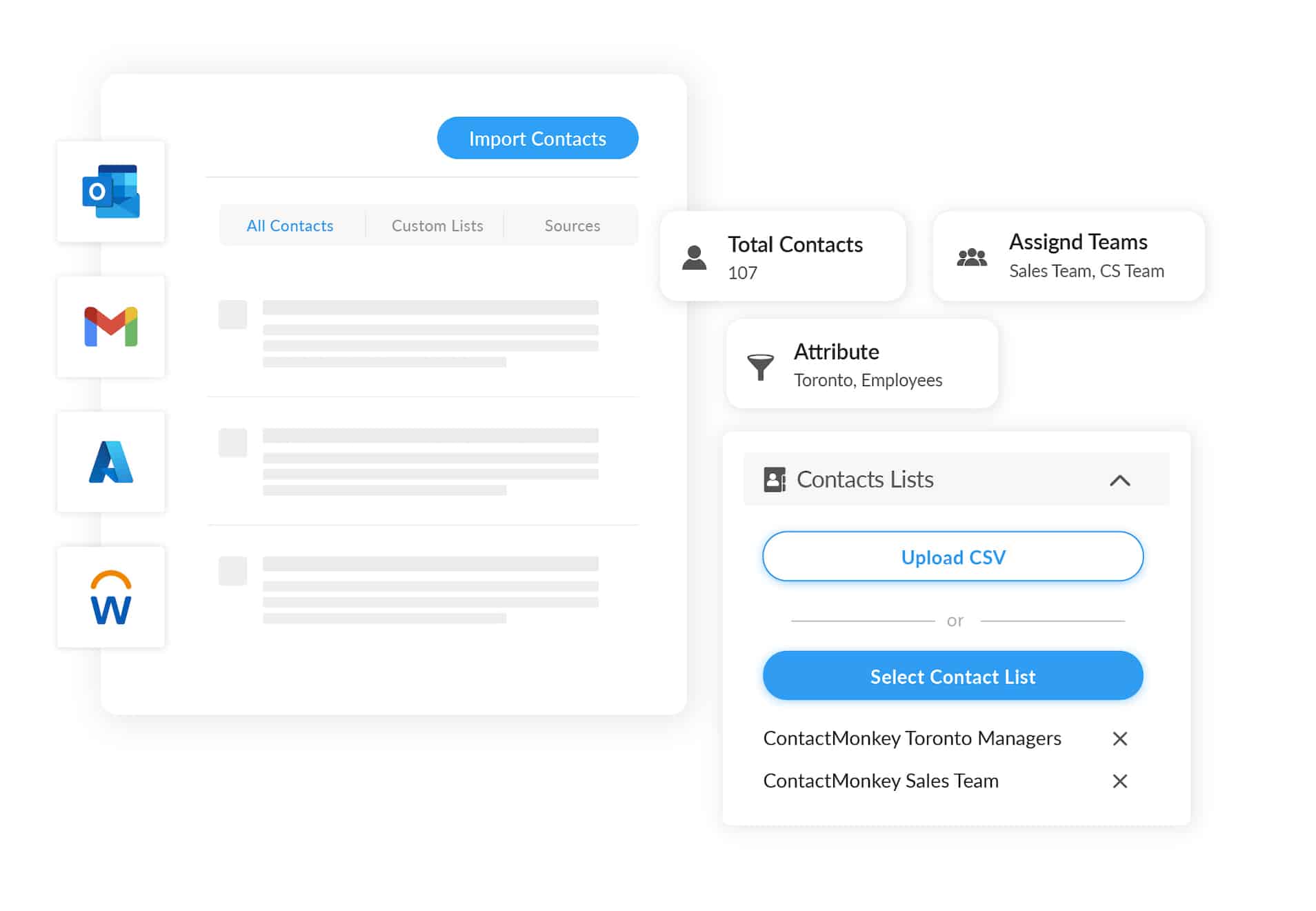When you think of internal communication, what comes to mind? Is it team meetings or company-wide emails? While these are important forms of communication within an organization, they also play a crucial role in customer engagement.
How a company communicates internally greatly impacts how customers perceive and interact with the brand. The thought seems counter-intuitive, doesn’t it? After all, the communication needs of internal employees and external customers vary so much.
How can something like internal communication impact customer engagement, which is a purely external aspect? We’ll explore this by looking at:
- The importance of customer engagement
- 10 ways internal communications impacts customer engagement
- How to use internal communications tools (like ContactMonkey) to enhance internal comms
Revive employee engagement with targeted, interactive emails and newsletters
Book a 15 minute call with one of our team members
The Importance of Customer Engagement
Customer engagement refers to the connection and interaction between a customer and a brand. It goes beyond just purchasing a product or service but rather encompasses the entire customer experience. A strong customer engagement strategy is crucial for businesses as it leads to the following:
- Increased revenue: Engaged customers are more likely to make repeat purchases and spend more money on products/services.
- Brand loyalty: Engaged customers are more likely to remain loyal to a brand and recommend it to others.
- Valuable feedback: Engaged customers are more likely to provide honest feedback, which helps improve products and services and the overall experience.
- Strong reputation: Positive interactions with engaged customers lead to a stronger brand reputation—creating a positive image in the market.
Today, customer engagement is more critical than ever. According to research by SalesForce, 80% of customers say that their experience with the company is as important as its products and services. Knowing how internal communication impacts customer engagement can help you build strategies to make the customer experience a top priority. Internal communications and the customer journey go hand-in-hand.
10 Ways Internal Communications Impacts Customer Engagement
Now that we’ve established the importance of customer engagement let’s dive into how internal communication plays a crucial role in shaping it. Here are the ways that effective internal communication positively impacts customer engagement.
1. Alignment: Keeping everyone on the same page
Employees communicate more effectively with customers when they agree regarding a company’s values, goals, and messaging. This creates a unified brand experience.
For example, if a customer has a great experience with a sales rep but receives poor customer support, it creates an inconsistent experience—negatively impacting engagement. However, with stronger internal communication, employees align their messaging and actions—drawing a direct line between internal communication and customer experience.
2. Customer knowledge: Empowering employees to understand better and serve customers
Internal communication can provide valuable insights into customer needs, preferences, and pain points. With this information, teams better tailor their interactions and offerings—increasing the likelihood of customer engagement.
For instance, if the sales team knows a specific product feature is in high demand, they can highlight it to potential customers—increasing their interest and engagement.
3. Crisis management: Keeping customers informed during challenging times
Internal communication becomes crucial for maintaining customer trust and confidence during crises or uncertainty. This is where having a crisis communication plan comes in handy.
Clear communication with employees helps customers receive accurate information. This helps to prevent customers from feeling disconnected or abandoned during difficult times—leading to stronger customer engagement and loyalty.
4. Boosts employee engagement: Finding ways to keep employees excited
Engaged employees are more likely to provide exceptional customer service—leading to increased customer engagement. Effective internal communication fosters a positive work environment and promotes employee satisfaction, resulting in better customer interactions—these are key drivers of employee engagement.
Think of it as a ripple effect: positive internal communication leads to engaged employees, who positively impact customer engagement.
5. Consistency: Creating a unified brand experience
When there is consistency in messaging and communication across all levels of the organization, you build trust with customers.
They know what to expect from the company and feel confident in their interactions. For example, a consistent brand voice and tone in internal and external communications creates a cohesive, trustworthy brand image for customers to engage with.
6. Strengthened brand: Attracting and retaining top talent
A company with strong internal communication practices is seen as a desirable employer. This perception extends to how customers view the company, leading to increased customer engagement and loyalty.
For instance, if a company’s employer brand values revolve around a positive work culture and employee satisfaction, it creates a positive company image for the customer.
7. Team collaboration: Working together to serve customers
Internal communication promotes collaboration and teamwork within the organization. When teams work together, they serve customers better and resolve issues more quickly and efficiently. Each department brings unique expertise and perspective, creating a more holistic approach to customer engagement.
Hot tip: you can even use email collaboration software to allow inter-departmental team members to weigh in and deliver the best customer response.
8. Customer empathy: Understanding and addressing customer needs
By keeping employees informed about customer experiences and feedback, employees develop a better understanding and empathy for customers. This understanding leads to more meaningful interactions with customers and increased engagement.
An example is when call center employees know common customer complaints and frustrations. They can approach each interaction empathetically and provide better solutions. Sharing this information internally can improve engagement across all customer touchpoints, regardless of the department.
9. Feedback and improvement: Using internal feedback to enhance customer experience
Internal communication channels can serve as a valuable source of feedback from employees directly interacting with customers. This feedback can be used to identify areas for improvement and make necessary changes to enhance the overall customer experience.
When employees feel heard, they are more likely to continue providing honest feedback—leading to continuous improvement and increased customer engagement.
10. Learning opportunities: Improving for better customer interactions
An open and transparent internal communication culture provides opportunities for employees to learn and develop their skills, leading to better customer service. It can also lead to an organizational culture that values continuous improvement and strives for excellence in customer interactions.
Send better newsletters with these Outlook templates
Stop stressing about formatting. Get it right with these templates.
The Role of ContactMonkey in Enhancing Internal Communication
If you weren’t sold on a solid internal communications strategy before, how about now? The link between internal communication and customer engagement is clear: bridging the gap is important to make employees and customers even happier.
ContactMonkey provides a comprehensive solution for all internal communication needs— allowing you to optimize your communication channels and enhance employee and customer engagement.
Let’s walk through a few examples to see exactly how ContactMonkey helps with some heavy lifting of internal comms.
Scenario 1: A company that relies on interdepartmental information sharing to deliver a seamless customer experience
Your success team just hopped off a great call with a customer who shared valuable feedback about your product. Now, you need to ensure that feedback gets to your product team.
Using ContactMonkey, you can quickly share this feedback with your product development and marketing teams via internal email. Use our template builder to create email templates for Outlook or Gmail. When you have the look and feel you want, you can easily summarize the key points from the call—ensuring all teams are on the same page.

Through ContactMonkey’s email analytics and email tracking, you can track which teams have opened and engaged with the email, allowing you to ensure the information has been understood.

Email analytics improves internal communication and drives a more cohesive approach to addressing customer feedback—which, you guessed it, improves customer engagement.
Scenario 2: There is an outage that is impacting customers
Let’s walk through another example that impacts customer engagement: crisis management. During an unexpected situation, internal communication can be challenging yet crucial.
With ContactMonkey, you can quickly send out internal emails with updates and important information to all employees or segment to a specific list. This ensures the right people are informed and equipped to handle customer inquiries or concerns.
Typically, internal communicators count on their IT department to set up distribution lists, but there’s no time to wait during a crisis. Thankfully, with ContactMonkey’s List Management feature, you have the power to quickly create your own distribution lists and CSVs for custom email lists in just a few minutes.

These lists can sync with your Human Resource Information Software (HRIS) like Workday and ADP, as well as Azure Active Directory so that any new and old lists will automatically stay up-to-date.Once you get to the actual writing, it’s important to communicate the most relevant information quickly.
If you’re stuck, you can use generative AI from ContactMonkey’s ChatGPT email assistant to find the right message and tone.

After the email is sent, you can track performance with analytics and communicate any necessary updates or changes to the team. For future communications, you’ll better understand via ContactMonkey’s Click Maps feature where employees or customers click.

This way, you can deliver content types that capture your readers’ attention the most.
Features internal comms teams can’t work without
Discover why ContactMonkey is the #1 choice for internal comms software.
Get Strategic About How Internal Communication Impacts Customer Engagement
Now that you’ve seen how ContactMonkey enhances internal communication, you can strategically integrate the right software into your customer engagement strategy. Knowing how to communicate effectively with internal and external customers will be advantageous for boosting both employee and customer engagement.
Grab some actionable tips from this article and start weaving them into your daily internal comms. Keep sprucing up and putting internal communication first; you’ll definitely see a boost in customer happiness and engagement. It’s going to be awesome!
Ready to get serious about your internal communications? Try ContactMonkey for free by booking a free demo today!


